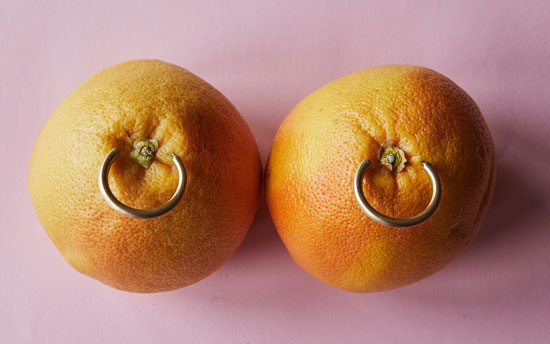Nipple Piercings

Nipple piercing is a form of body piercing where a jewelry piece, such as a barbell or ring, is placed through the nipple. It is a personal decision and should be approached with careful consideration. Here are some important points to keep in mind if you're considering nipple piercing:
1. Professional Piercer:
Choose a reputable and experienced professional piercer who follows strict hygiene and sterilization practices. Research their credentials, read reviews, and ensure they have a clean and safe environment.
2. Healing Time:
Nipple piercings can take several months to fully heal. During the healing process, it's important to maintain proper aftercare, including cleaning the piercing regularly with a saline solution and avoiding irritation or trauma to the area.
3. Pain and Sensitivity:
Nipple piercing can be painful, as the nipple area is highly sensitive. Pain levels can vary depending on individual tolerance and the specific piercing technique used. Be prepared for some discomfort during and after the procedure.
4. Infection and Complications:
Like any piercing, there is a risk of infection and complications. It's crucial to follow the aftercare instructions provided by your piercer and keep an eye out for signs of infection, such as increased redness, swelling, discharge, or persistent pain. If you notice any concerning symptoms, seek medical attention promptly.
5. Lifestyle Considerations:
Consider your lifestyle and activities that may come in contact with the piercing. For example, certain sports or activities that involve tight clothing or direct nipple contact may cause discomfort or irritation. It's important to assess whether your lifestyle is compatible with nipple piercings.6. Jewelry Selection:
Choose jewelry specifically designed for nipple piercings, made from hypoallergenic materials such as surgical stainless steel, titanium, or niobium. Avoid low-quality or cheap jewelry that can cause irritation or allergic reactions.
7. Individual Factors:
Everyone's anatomy is different, and some individuals may not be suitable candidates for nipple piercings due to specific breast shape, size, or health conditions. Consult with a professional piercer who can assess your suitability and provide personalized advice.
Remember, nipple piercing is a personal choice, and it's essential to make an informed decision. Consider discussing your plans with a professional piercer and consult your healthcare provider if you have any specific concerns or medical conditions related to nipple piercings.
 Friendship Day
Friendship Day Good Morning
Good Morning